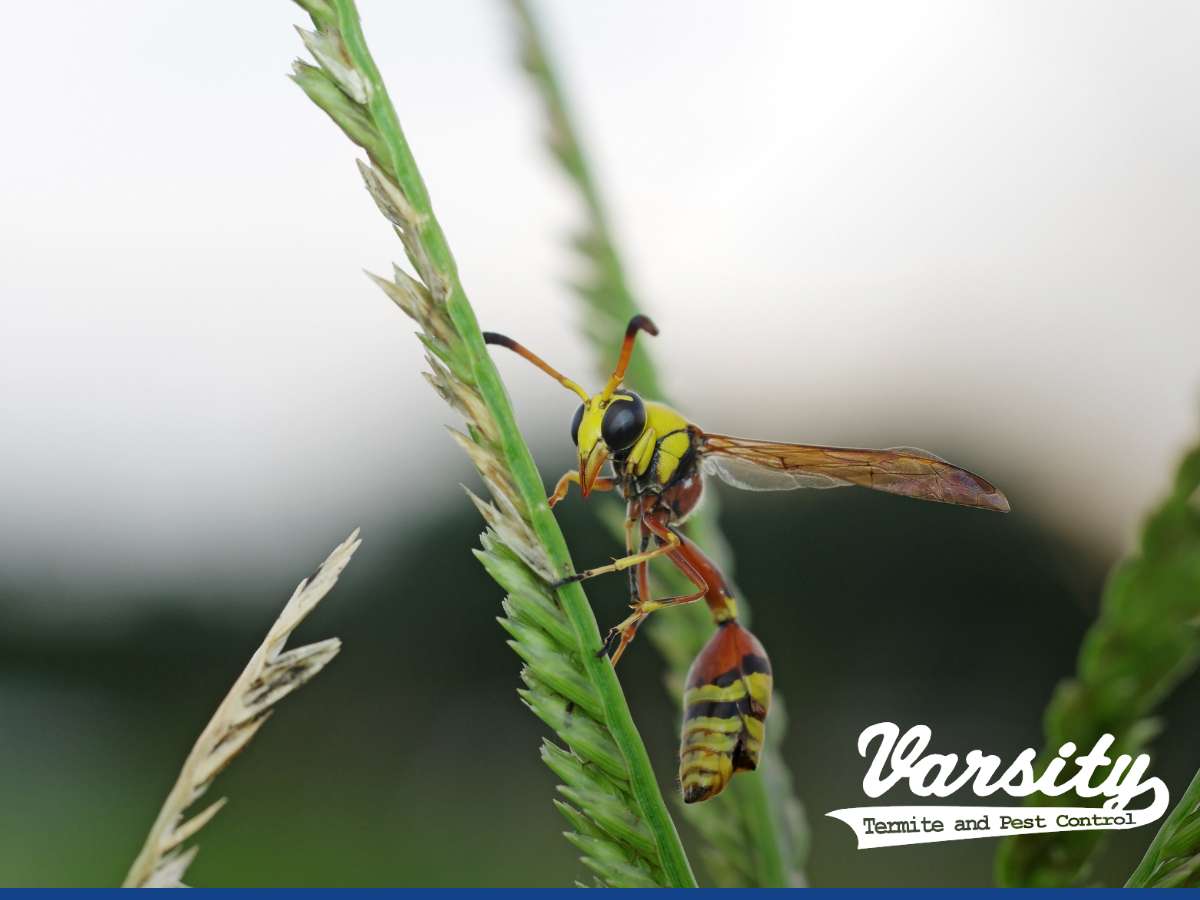Mud daubers might not be the most famous backyard visitors, but they can be intriguing and even a nuisance at home. Understanding their behavior, appearance, and how to handle them is crucial if you want to keep your outdoor space in top condition.
In this blog post, we’ll explain all you need to know about these creatures so you can handle them properly before calling your trusted professional pest services in Phoenix.

A mud dauber is a common name for a wasp that builds its nest from mud. They are also known as potter wasps and are very common in Arizona and other climes with similar characteristics.
Mud daubers belong to the insect order Hymenoptera. This order includes all species of bees, wasps, hornets, and other organisms, although mud daubers are most commonly seen in the Sphecidae family (this family consists of solitary wasps).
As for their appearance, they go through a complete metamorphosis over their existence. This means they develop from eggs into blind, maggot-like larvae. When they transform into winged adult forms, they have completed their transition.
Adult versions have specialized mouthparts for drinking floral nectar. Their bodies come in a variety of hues, including black, brown, and blue.
Mud daubers are found throughout North America, even in desert areas like Arizona. They usually build their nests wherever supplies are plentiful and easy.
You can find their nests in:
Mud dauber nests are extremely messy and can grow to enormous sizes if left unchecked. Feel free to contact professional pest services in Phoenix if you suspect you have an infestation.
Mud daubers build their nests from their namesake ingredient, mud. They create their dwellings out of mud collected from puddles and other nutrient-rich soil and moisture sources.
Mud dauber nests are frequently small and tube-shaped, with many routes running vertically and horizontally through the nest.
Some nests resemble clay pots and are usually found sitting in or on top of a home rather than attached to it.
Mud daubers are looking for food, shelter, and someplace to deposit their eggs. This means that mud daubers are particularly drawn to:
Mud daubers aren’t very aggressive critters. They usually only strike and use their stingers when they feel threatened. However, even one sting can be lethal for persons who are allergic to bees and wasps. Hence the importance of professional pest services if you find many of these creatures at home.
Most people who just receive one sting will experience the normal symptoms of a bee or wasp sting. All of the symptoms will appear in the area where you were stung. These modest symptoms may include pain, swelling, and itching.
A mud dauber infestation is irritating, time-consuming, and can damage the structures on which they nest. To effectively avoid a mud dauber infestation, take these steps:
Remember that once mud daubers have infested a space, they are difficult to eliminate without adequate pest treatment or pest services. However, these preventative steps are great to avoid an initial infestation.
Mud daubers might not be aggressive, but if their nests become a nuisance to your house, then it’s time to contact professional pest services. Some signs include numerous nests around your home, allergic reactions to stings, or if the wasps start invading indoor spaces.
If you’re looking for a safe and efficient removal, contact us at Varsity Termite & Pest Control today!

Published By:
Varsity Termite and Pest Control – Gary Dobert
6056 E Baseline Rd #122
Mesa, AZ85206
Office: 602-757-8252
Email: service@varsity.myfavoritewebdesigns.com
Website: https://varsity.myfavoritewebdesigns.com/


© Varsity Termite and Pest Control - Google - Privacy Policy